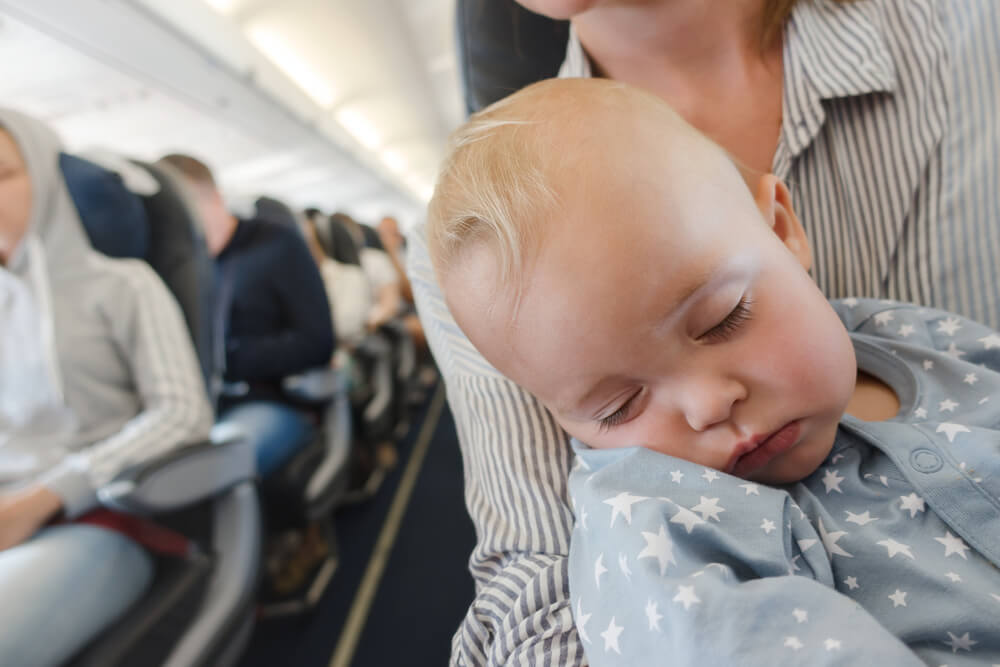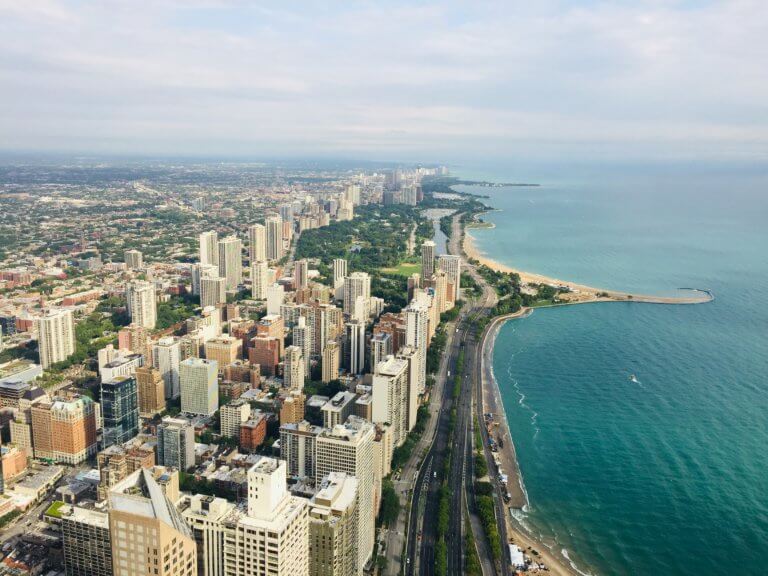This post may contain affiliate links, view our disclosure policy.
Are you nervous about how to deal with toddler jet lag during or after your upcoming international trip?
Traveling as a family has many benefits, but it also has its challenges.
From preparing an itinerary to traveling to your destination, many variables can throw a wrench in your travel plans.
It isn’t any easier with toddlers in tow, especially when everyone’s feeling jet-lagged upon arrival.
In this post, we’ll discuss how to deal with toddler jet lag so you can be better equipped to help reset your toddler’s body clock with minimal fuss.
The links on this page are Amazon affiliate links. If you click on the links and make a purchase, I receive a small commission at no extra cost to you.

Jet Lag in Toddlers
Understanding and knowing how to deal with jet lag in toddlers is one of our top tips for flying with kids.
Jet lag is a temporary sleep problem that can affect anyone who quickly travels across multiple time zones.
The more time zones crossed, the more likely you and your children are likely to experience jet lag.
Since a toddler’s brain is less developed than an adult’s, toddlers (and children in general) are more impacted by jet lag and it takes longer for them to adjust once you get to your destination.
Though you too will likely feel the effects of jet lag, it’s important to have patience with toddlers as they can’t adapt to sleep cues as readily as an adult.
Toddler Jet Lag Symptoms
Jet lag is inevitable for every type of traveler, regardless of their age.
Symptoms of toddler jet lag can include:
- Inability to sleep through the night (waking after only a few hours of sleep)
- Mood swings
- Lack of appetite
- Fussiness
Along with taking note of our tips for keeping your family healthy while traveling, here are seven ways to deal with toddler jet lag.
1. Get on Local Time As Soon As Possible
Once you arrive at your destination, the best tip to prevent toddler jet lag is to get on the local time as soon as you arrive.
In other words, if you arrive at the location’s dinner time, eat dinner.
If you arrive at its bedtime, go to bed.
Jumping right into the daily flow of the new time zone will best help to reset your toddler’s body clock.
Additional planning tip: In order to deal with toddler jet lag when returning home, apply these same principles once you arrive back in your hometown.

2. Spend Time Outside and In the Sunlight
Getting outside always does wonders for a person’s mental and physical health.
In fact, another one of the best ways to combat toddler jet lag is to spend as much time as possible outdoors and in the natural sunlight on the first day in your new location.
Having exposure to sunlight will help regulate your toddler’s circadian rhythm, and in turn, provide them with a better night’s sleep.
Take plenty of walks during daytime hours, and don’t hesitate to let your toddler take shorts naps on and off in his/her stroller while spending time outdoors.
3. Plan Low-Key Activities At First
It will take two to three days for a toddler to adjust to a new time zone, so be sure to plan for more low-key activities at the beginning of your trip.
Low-key activities to consider may include bird watching at a wildlife refuge, taking a stroll on the beach or in a historic downtown neighborhood, doing a scavenger hunt at a nature park, or visiting a botanical garden.
You can always experience high-energy things like amusement park rides and water parks later on in the trip.
Use your best judgment so everyone can have a good time and overcome the inevitable jet lag.

4. Stick to A Familiar Routine
While incorporating the local time into your strategy, try to stick to your home routine as much as possible.
In other words, to help cure the symptoms of toddler jet lag, stick to the mealtime, nap, and bedtime schedule that your child is used to.
Don’t let them nap much longer than they would at home, and don’t introduce new habits like later bedtimes, co-sleeping, etc. (These habits will be difficult to break once you get back home.)
As another example, if your toddler enjoys listening to stories at bedtime, take a couple of their favorite books along with you to read to them before bed.
Likewise, remember to include your toddler’s favorite blanket or stuffed animal on your family packing list to serve as a familiar comfort item.
5. Dim the Lights at Night
After coming back from dinner, it is best to turn on as few lights as possible so your toddler can naturally get tired as the night wears on.
Bright lights may make them feel like it’s still light outside, and that they should stay up and play.
On the other hand, dim lights with warm hues will encourage them to get ready for bed at a reasonable hour.
Additional planning tip: Be sure to check out our complete guide for planning international travel with kids that includes an international travel checklist you won’t want to miss!
6. Don’t Sleep in Too Late
Yes, on vacation, you have every right to sleep in later than usual.
However, it’s not a good idea to sleep past 10 in the morning, even if dealing with jet lag.
Sleeping in can ruin your chances of regulating your circadian rhythm to the new time zone because sleeping in late usually means you’ll then get to bed later than usual.
Make good use of your time by getting up early and going to places that will likely be less crowded in the morning hours.
Remember that having exposure to sunshine during the day will always work to your advantage and make your kids use their energy at appropriate times instead of during the late hours of the night.
7. Be Flexible With Your Plans
It makes sense that people want to get the most out of their vacations but avoid cramming too much excitement into one trip.
You can make a detailed itinerary or a simple list of places you’d like to go; however, go at your own pace and make changes to your original plans whenever it is necessary.
Unexpected bad weather may force you to do something else entirely, so be prepared with backup plans just in case.
Another thing you should do is keep an eye on your toddler and put them down for a nap when they appear to be getting cranky.
Take advantage of this downtime to prepare for the last half of each day’s activities while they nap.
Final Toddler Jet Lag Tips
No matter which direction you are traveling, everyone will have an adjustment period in order to get used to a different time zone.
If you’re only going one or two time zones away, consider adjusting your bedtime in the days leading up to the trip.
For example, let’s say you live in California (PST) and decide to take a family vacation to Texas (CST).
Three days before your trip, adjust everyone’s bedtime one hour ahead of schedule.
Continue adding another half hour to this adjusted schedule over the next couple of days.
Once you arrive in the new time zone, everyone can be used to going to bed at the “regular” bedtime.
What tips and tricks have your tried to help your toddler adjust to time changes when traveling? I’d love to hear in the comments below!
Jen
*Before leaving, be sure to check our Travel Resources Page to find our exclusive travel discounts and to book hotels, rental cars, and guided tours.*
If you like reading our tips on how to deal with jet lag in toddlers, check out our related posts:
- 18 Amazing “Are We There Yet?” Road Trip Activity Bags For Kids
- Best Road Trip Activities for Toddlers
- Top 16 Tips for Flying With Kids & Ways to Keep them Calm
- 8 (Unexpected) Benefits of Traveling With Kids













